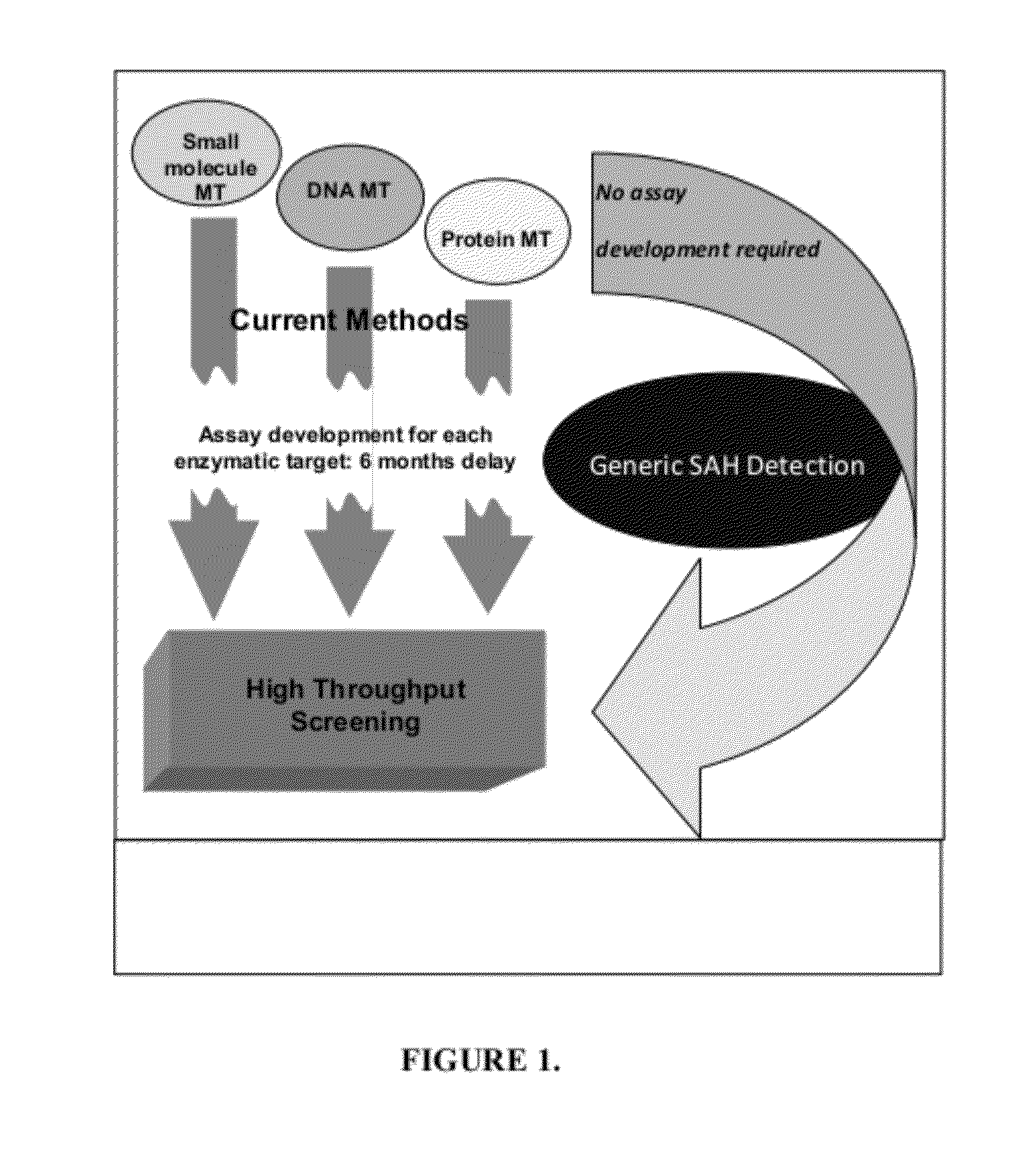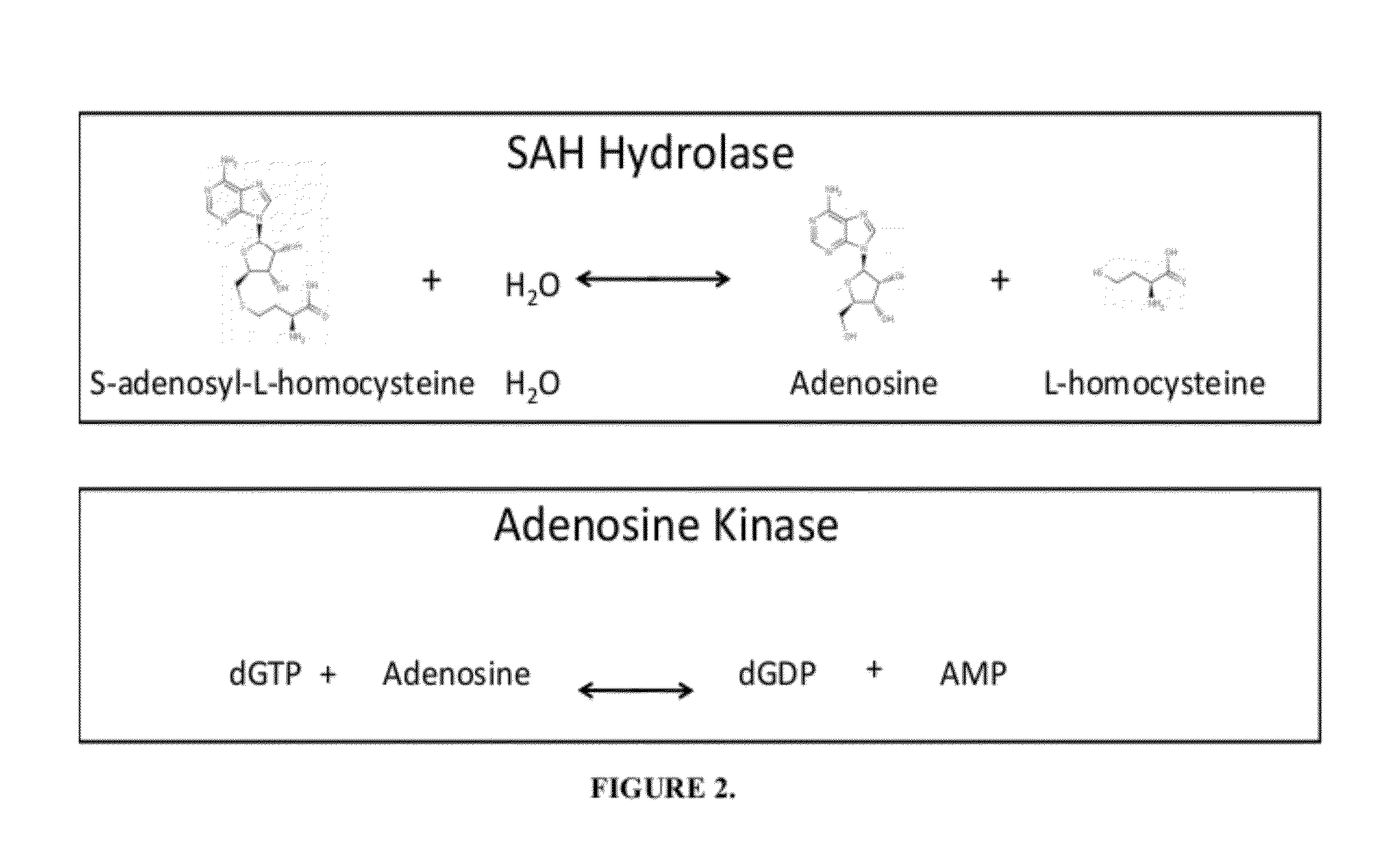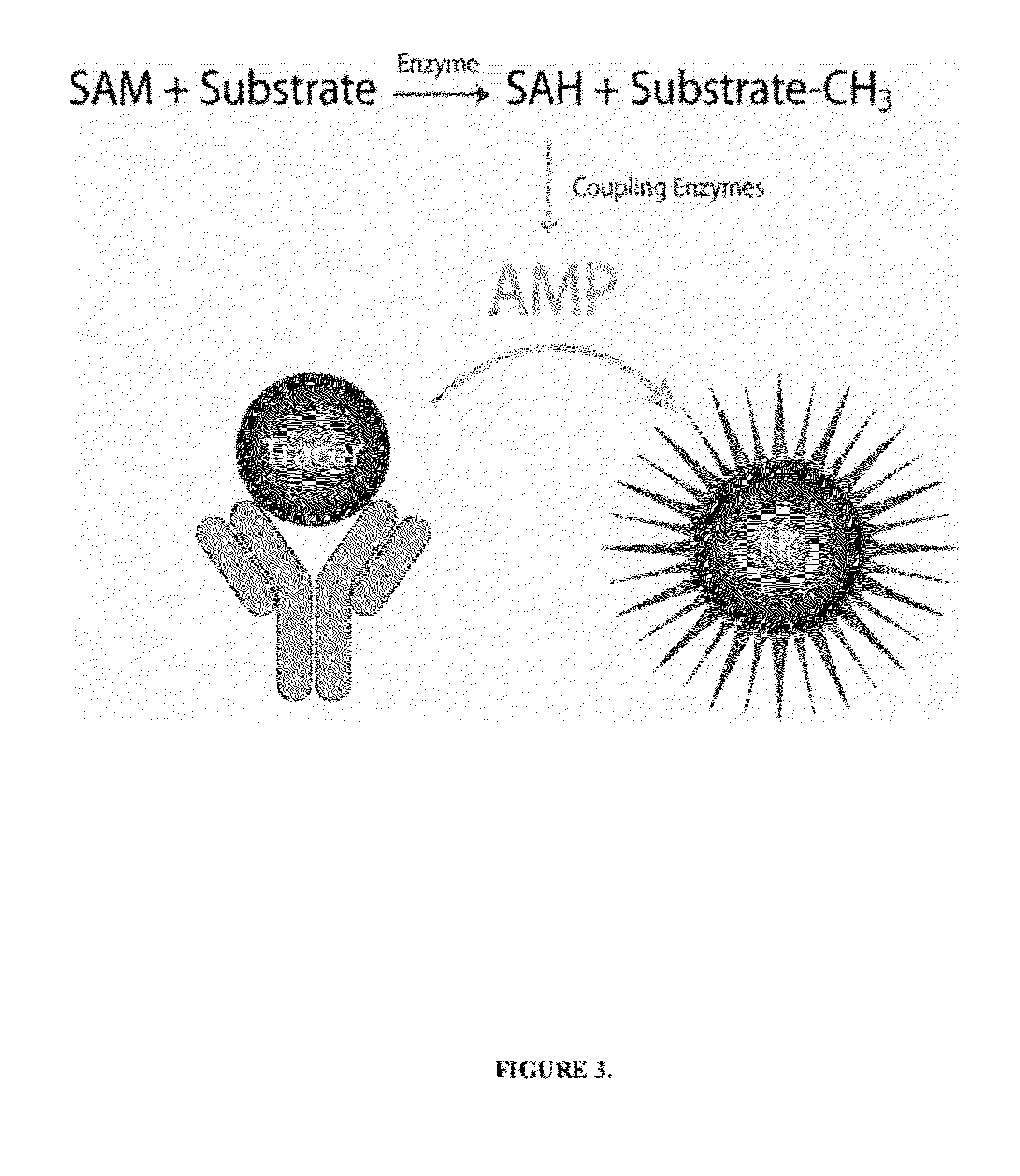Detection Method for Methyltransferase Enzymatic Activity
a detection method and methyltransferase technology, applied in the direction of transferases, fluorescence/phosphorescence, instruments, etc., can solve the problems of cumbersome methods, reduced use of hts radioassays, and complicated incorporation into automated hts platforms
- Summary
- Abstract
- Description
- Claims
- Application Information
AI Technical Summary
Problems solved by technology
Method used
Image
Examples
examples
Histone Methyltransferase Activity Detection
[0035]Histone methyltransferases (HMTs) are currently of high interest as drug targets because of their role in epigenetic regulation, however most HMT assay methods are either not amenable to an HTS environment or are applicable to a limited number of enzymes. One embodiment of the instant invention is a generic methyltransferase assay method using fluorescent immunodetection of AMP, which is formed from the MT reaction product S-adenosylhomocysteine in a dual enzyme coupling step. The assay format shows >100 mP signal with Z′>0.5 at initial rate conditions for 1 μM to 50 μM SAM. The suitability for HTS is demonstrated using 384-well plates with >16 hour deck (prior to plate addition) and signal (stability after plate addition) stability at room temperature. The activity of three HMTs (G9a, Set7 / Set9, SUV39H1) were followed with using histone H3 peptides while G9a activity was assessed using both peptide and full length histone H3. In add...
PUM
 Login to View More
Login to View More Abstract
Description
Claims
Application Information
 Login to View More
Login to View More - R&D
- Intellectual Property
- Life Sciences
- Materials
- Tech Scout
- Unparalleled Data Quality
- Higher Quality Content
- 60% Fewer Hallucinations
Browse by: Latest US Patents, China's latest patents, Technical Efficacy Thesaurus, Application Domain, Technology Topic, Popular Technical Reports.
© 2025 PatSnap. All rights reserved.Legal|Privacy policy|Modern Slavery Act Transparency Statement|Sitemap|About US| Contact US: help@patsnap.com



